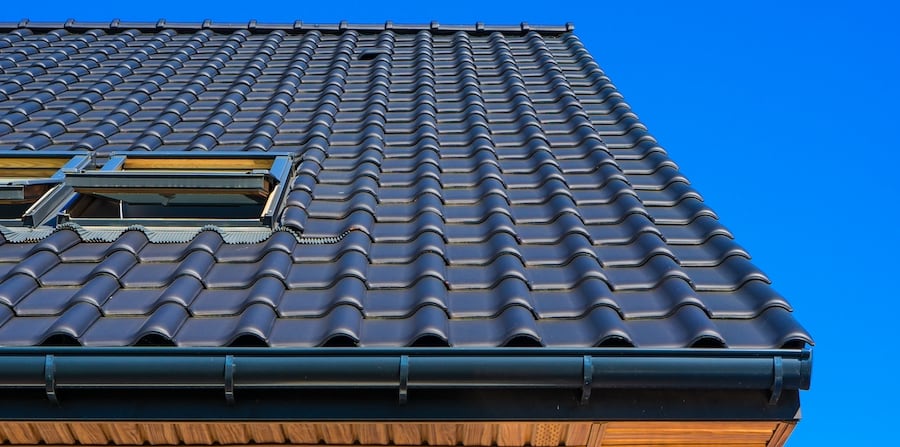If you own your home long enough, the odds are that you’ll need to replace or repair your roof along the way. Having some knowledge of the parts of a roof, roofing terms, and the different roofing options available to you will help you make smart and informed decisions.
Protection from the elements. Whether it’s rain, snow, ice, or the heat of the sun’s rays, your roof is the first line of protection for your home. A roof that’s in poor repair is less able to fend off the elements when the inevitable occurs.
Comfort and energy efficiency. A properly maintained and insulated roof will make the task your home’s heating and cooling system faces easier. With a good roof over your head, you’ll be cooler in the summer and warmer in the winter, saving money on energy costs all year round.
Health. Mold and mildew in your home can be a significant cause of respiratory issues and sickness. Since one of the leading causes of mildew and mold in homes is moisture that has entered via a leaky roof, a sound, watertight roof is essential.
Home value and curb appeal. A well-maintained roof will help your home keep its value and avoid issues during home sale inspections. And a stylish roof can add a touch of flair that will make your home really stand out.
If you want to be well informed when you discuss roofing repairs or replacements you should understand the component parts of your roof.
Shingles or tiles. This is the top layer of your roof. While shingles and roof tiles are made from a variety of materials, including wood, clay, or cement, asphalt shingles are the most common type found on American homes.
Sheathing. Underneath your shingles is the sheathing. These boards are attached to the rafters and are one of the main structural elements of the roof. The sheathing layer is usually constructed of particleboard or plywood.
Underlayment. This is a paper-like, water-resistant layer that is laid over the sheathing to provide protection from water. It’s usually combined with a vapor barrier, plastic sheeting that blocks air and water from penetrating the roof.
Rafters. Your rafters are the wood or metal skeleton that supports the sheathing.
If you need to consult with a roofing contractor it helps to be able to speak the same language. These terms describe some of the different design elements of your roof.
Ridge or peak. This is the highest point of your roof.
Eaves. The edges of your roof that hang over your home’s exterior walls.
Gable wall. This is the triangular wall that’s located between the eaves and the ridge of the roof.
Hip. This is a high point of the roof where different roof sections intersect.
Abutment. This is where your roof meets a vertical structure, like a chimney or a wall.
Dormer. These are sections of the house that stick out from the roof. They hold windows and are used to bring light into rooms in the upper stories of a home.

While most homes have shingle roofs, that certainly isn’t your only option. Here are some of the different roof material types you can choose from.
Asphalt composite shingles. Hands down, asphalt shingles are the most common roofing material used in North America. And why not? They’re durable, easy to install, and relatively inexpensive. You can find plenty of contractors who are experienced in installing asphalt shingles, and a well-laid asphalt shingle roof made from quality materials can easily last 30 years.
Metal shingles. Metal roofs have outstanding durability, but not everyone likes the look of a traditional standing-seam metal roof. That’s where metal shingles come in. Made from steel or aluminum, they are produced in a variety of styles and colors and present a distinctive look. They’re durable too — a 50-year lifespan is very realistic.
Wood shingles. Wood shingles can be very attractive and carry a very rustic vibe. But wooden shingles come with some downsides too. They’re quite expensive when compared with other alternatives, and may not hold up well in wet climates. Wooden shingles are also not a good choice in areas that may experience wildfires.
Slate shingles. Slate shingles are made from thin slices of real stone. A beautiful building material, roofs made with slate tiles can last for hundreds of years. As you might expect, expect to pay a high price for this premium material, and be sure to work with a contractor that has experience in the specialized skills needed to lay these roofs.
Clay tiles. Clay tiles are an excellent choice for coastal regions with salty air and hot, dry desert climates. One of the most long-lasting of all roofing materials, well-made clay tiles can last over 100 years. The downside is that they can be an expensive option.
Concrete tiles. Less expensive than clay, but with some of the same performance characteristics, concrete tiles are heavy, providing excellent wind resistance, but also requiring a properly reinforced structure.
Synthetic slate tiles. Made from rubber or composite materials, synthetic slate tiles offer a reasonably priced alternative to slate roofs. Well-made synthetic slate tiles are lightweight, attractive, and much more reasonably priced than stone tiles.
Standing seam metal roofing. The classic standing seam metal roof, so-called because of the vertical interlocking seams present where panels meet, is one of the most durable of all roofs. Made from steel or aluminum, they’re completely recyclable and very long-lasting. If you’re considering a metal roof of this type, be sure to choose a contractor experienced with their installation.
We count on our roofs to protect our homes through all sorts of weather. And it’s an important job — a leaky roof is a sure pathway to water damage and mold in your home. Regular roof maintenance should include inspecting your roof and your home for the signs of roof failure. Here are some tell-tale signs to look for.
Shingles with curled edges. Asphalt shingles should lay neatly on top of each other. Curling edges or bowed shingles is a sign that the shingles are near the end of their useful lifespan.
Cracked or bald shingles. Asphalt shingles that lose their granular surface are prone to failure. And cracked shingles of any type should be replaced since they’ll allow water to penetrate through them.
Mold or algae growth. Often mold growth or algae discoloration can be cleaned with a power washer. Be careful not to allow water to be forced underneath the shingles, however. Both of these are signs of damp areas, however, so be alert for other signs of shingle failure.
Rot or decay. Wooden shingles are prone to rotting, particularly in damp and humid climates. Have your roof inspected if you detect rotting wooden shingles.
Damaged flashing. The flashing that protects the edges of your roof and intersections with chimneys, standpipes, and other areas are susceptible to failure, allowing water to seep into your home. Be sure to inspect any evidence of damaged flashing if you see it.
Water damage inside. If you detect water damage inside your home, especially on upper levels, have your roof inspected. If you have an accessible attic, it’s a good idea to take a close look on a regular basis for water damage.
Consider the age of your roof. Even a sound-appearing roof can conceal problems, particularly if it’s been a long while since the roof was replaced. Check your home records, if available, and seriously consider a new roof if you’re reaching the end of a realistic lifespan for your roof.
By keeping these points in mind and regularly inspecting your roof, you may prevent a small problem from becoming a serious one. If in doubt, get a professional roofer to look things over.
Over time, damage of some sort is bound to occur to your roof, whether it’s damage from a storm or simply the damage caused by the ravages of time. Since your roof is your home’s first line of defense against the elements, keeping it in top condition is essential. When considering whether you need to repair or replace your roof, these guidelines can help.
A damaged roof doesn’t necessarily need to be replaced. Consider these factors when balancing your options.
A small area may only require repair. If the extent of the damage is a few missing shingles or some damaged flashing, you may be fine with a repair. Professional consultation is a smart idea.
Consider your budget. You don’t want to be penny-wise and pound-foolish, but sometimes the household budget may only accommodate a repair rather than a replacement. Keep the next point in mind, however.
The structural integrity isn’t affected. Damage to the underlying structure of the roof must be addressed when considering repair versus replacement.
Sometimes a repair just isn’t enough, and you’ll need to consider a roof replacement. The following criteria should be considered.
The age of your roof. An older roof is more likely to need repairs. For example, most shingles will be near the end of their lifespan after 20 to 30 years, so replacing a few damaged shingles is just prolonging the inevitable. If you don’t know the age of your roof, a visual inspection by a qualified roofer can provide the information you need.
The extent of the damage. If your roof has been seriously impacted by a storm, water exposure, or falling debris, the damage may be much more than cosmetic, with the structural integrity of the roof itself threatened. Consult with a professional to get a clear picture of what repairs your roof requires.
There are many factors to consider when evaluating your roof’s condition and making decisions about repair or replacement. Check out this guide for a more in-depth look.
If you're in the Dallas Fort Worth area and need roof work done, whether as a result of storm damage, the toll of time, or just because you want a new look, you need to consult with professionals who know the ins and outs of roofing. At Team Enoch, all of our roofers are fully licensed and insured, with full background checks. And we warranty any of the work we do, whether it’s a simple repair or a completely new roof.
When you’re ready for a state-of-the-art roofing job, done with the highest quality materials and no corners cut, contact us to take a look at your job. Remember, estimates are always free!

You caught my attention when you mentioned clay tiles and how they can be some of the longest-lasting roof materials. I'm willing to pay any amount of money if it means that I can keep the gorgeous house I worked so hard to own, and this material could help me do that. I'll look around for any roofing contractors that can help me get some slate installed so I won't need to worry about any further roof projects.